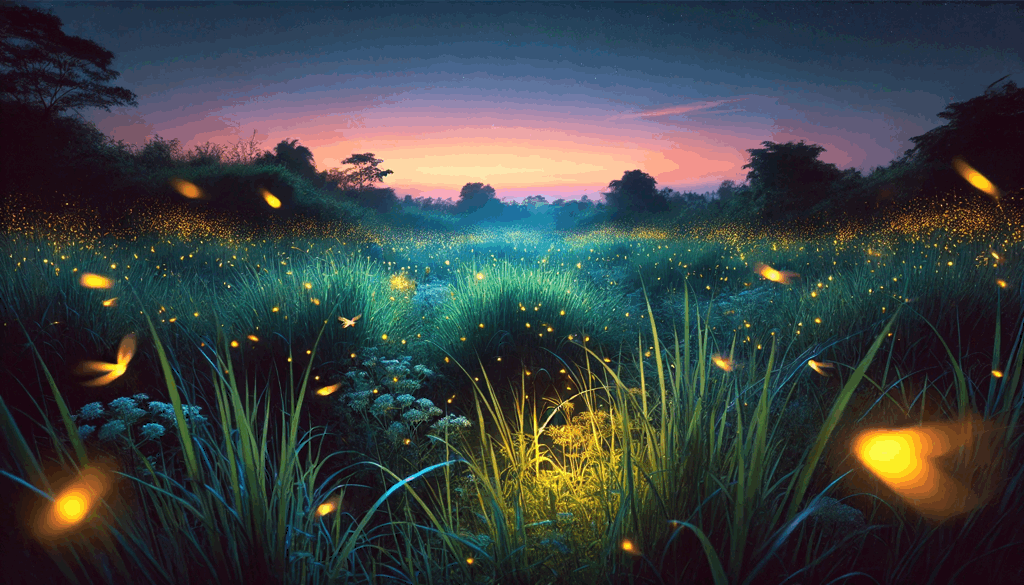Fireflies, those enchanting insects that light up our summer nights, have always captured the imagination of people worldwide. Their gentle glow, a benchmark of summer, brings back memories of childhood adventures and cozy backyard evenings. But what exactly makes these little creatures light up? Let’s dive into the magical world of fireflies and the fascinating science of bioluminescence.
Bioluminescence, the ability of living organisms to produce light, is what makes fireflies shine. This phenomenon occurs due to a chemical reaction in the firefly’s abdomen. An enzyme called luciferase acts on a molecule called luciferin, in the presence of oxygen and ATP (adenosine triphosphate), producing light. This glow is typically yellow-green and is used primarily for communication, particularly in mating rituals.
Fireflies are a type of soft-bodied beetle. Their bioluminescence serves as a warning to predators, signaling that they are not tasty due to the presence of toxic chemicals in their bodies. Despite their toxic defense, fireflies are harmless to humans and can be safely handled without fear of being bitten or stung.
The beauty of fireflies is not just limited to their glow. Their presence is a signal of a healthy environment, often found in areas with dense vegetation and clean water sources. They are predominantly seen in forests and fields, where they perform their captivating light shows. In the United States, there are over 165 species of fireflies, each with its own unique pattern of light flashes. Globally, there are about 2,200 species, showcasing a remarkable diversity.
Interestingly, not all firefly species flash their lights in random patterns. Some species synchronize their flashes, creating a mesmerizing display. This behavior is seen in certain fireflies in the Appalachian Mountains and South Carolina, where synchronized flashing ensures that all individuals have a chance to find a mate.
While fireflies are the most well-known bioluminescent creatures, they are not alone in the natural world. Various organisms, including certain types of algae, plankton, and deep-sea creatures like jellyfish and squid, also exhibit bioluminescence. This ability to produce light is an evolutionary adaptation that serves various purposes, from attracting mates to deterring predators.
Fireflies are more than just a delightful part of summer evenings. They are indicators of environmental health and a reminder of the incredible biodiversity of our planet. Sadly, firefly populations are declining due to habitat loss, pollution, and the use of pesticides. Protecting their habitats is crucial to ensure that future generations can enjoy their magical glow.
So, the next time you see fireflies lighting up the night, take a moment to appreciate their beauty and the fascinating science behind their glow. Whether you’re reminiscing about childhood memories or experiencing them for the first time, fireflies bring a touch of magic to summer nights, reminding us of the wonders of the natural world.

